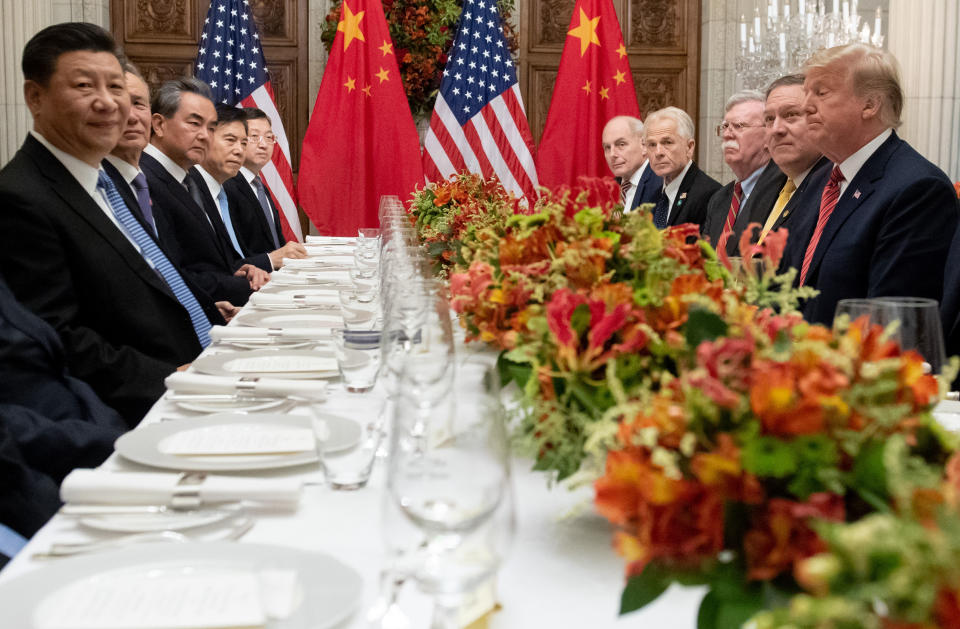The Trump trade war will drift into 2019

Investors worried about the damage of an escalating trade war with China are getting a breather.
After President Donald Trump’s meeting with President Xi Jinping of China in Buenos Aries on December 1, both sides agreed to a 90-day pause in the trade dispute. During that time, the United States and China will negotiate a series of reforms, with neither side imposing additional punitive measures on the other.
But a new deadline is coming early next year, and the end result could be the same series of escalating tariffs that CEOs and economists worry could force prices up, cut into profits and weaken the economy late in a business-cycle expansion.
Trump has already imposed new tariffs on about $250 billion worth of Chinese imports, roughly half of all goods China imports to the U.S. every year. Most of those products are subject to a new 10% tariff, and Trump had threatened to raise that to 25% on January 1 if China doesn’t open its markets further and stop stealing American technology. Trump now says he’ll hold back on those tariff hikes until March 1, as U.S. and Chinese negotiators work on terms of a deal.
‘We’ve been here before’
Markets will welcome the news, but there’s no guarantee anything will change. The 10% tariffs have been in place since September, and there’s been no meaningful progress on talks since then. A summit meeting between presidents can trigger fresh action, but if neither side is willing to make needed concessions, a deal will never happen.
“We’ve been here before,” economist Paul Ashworth of Capital Economics noted in a research brief after the Trump-Xi meeting. “China thought it had a deal with the Trump administration back in May, which included a pledge to buy more U.S. energy and agriculture. But facing criticism from Congress, Trump ripped up the deal and announced a first round of tariffs on China’s imports little more than a week later.”
Here’s the conundrum for Trump: He has promised to lower the U.S. trade deficit with China and force China to open its market to more American products. But the tariffs he has chosen as a negotiating ploy harm the profits of American firms and push prices up. The stock market has wobbled this year amid those concerns, and would probably sink if Trump went from 10% tariffs to 25%. This gives Xi leverage to wait Trump out and essentially dare him to raise tariffs further, knowing it would hurt the U.S. economy.
Here’s the conundrum for Xi: Trump is right about many trade abuses, a problem other Chinese trading partners also complain about. And the trade dispute is arguably hurting the Chinese economy more than the American economy right now. Yet Xi has committed to an economic model reliant upon asymmetric advantages for big Chinese firms that are subsidized by the state and benefit from protections against foreign competitors. Giving that up would force China to adapt to a new economic model, which many analysts find improbable.
So the inconclusive outcome in Buenos Aries presages several more months of dodging, weaving and trying to claim victory without giving much up—by both sides. And as March 1 approaches, markets will probably start to waver again, as it becomes hard to see how either Trump or Xi can bring himself to blink.
Confidential tip line: rickjnewman@yahoo.com. Click here to get Rick’s stories by email.
Read more:
Rick Newman is the author of four books, including “Rebounders: How Winners Pivot from Setback to Success.” Follow him on Twitter: @rickjnewman

